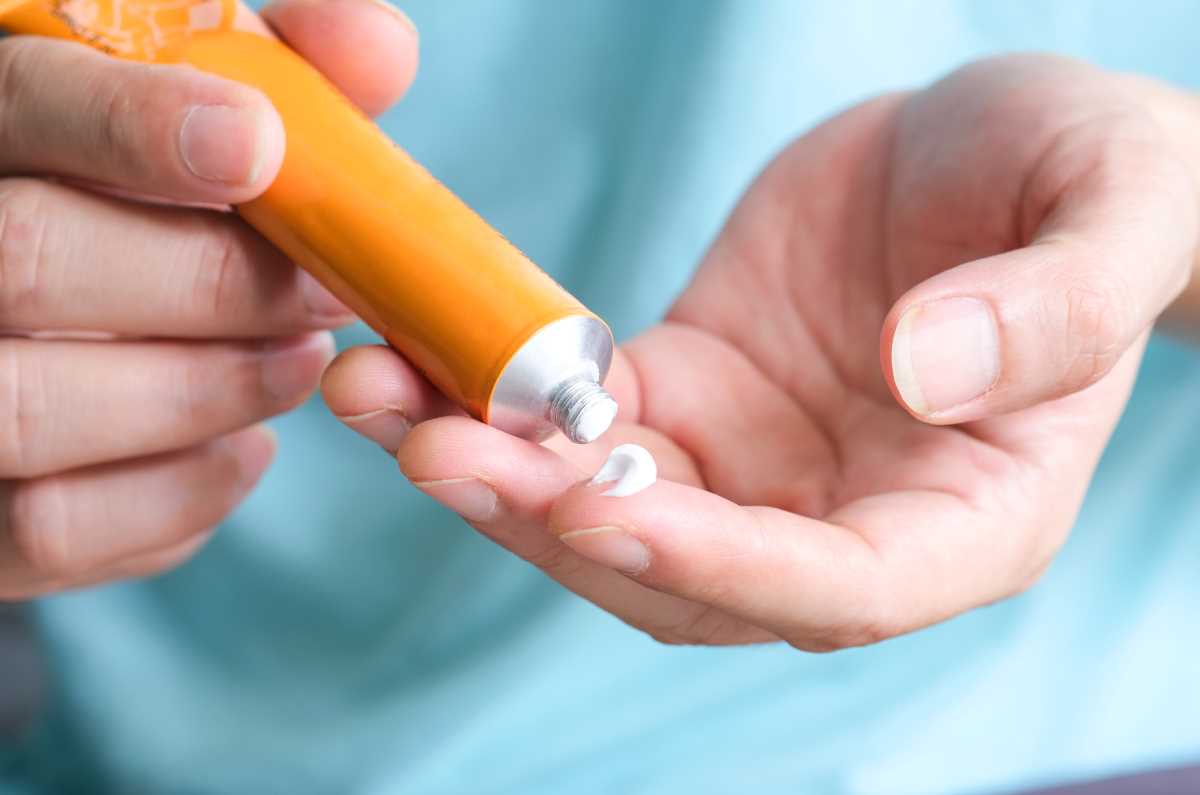Therein lies the rub… topical pain relievers
August 10, 2022 by Lisa Bywaters

Creams, sprays, liniments, ointments, patches, rubs & gels
If you open most medicine cabinets or bathroom cupboards, you’ll more than likely find a tube or jar of a pain-relieving rub. With varying degrees of smelliness!!😱
Many of us turn to these products when we wake up with a stiff neck or overdo it in the garden. The soothing ointments, creams, sprays, liniments, patches, rubs and gels that we apply directly to our skin (topically).
But what are they? How do they work? Are they effective? And are they safe?
First, there’s a vast array of topical products available in many forms and using different ingredients. Many are available to buy over-the-counter from your chemist or supermarket. However, some require a prescription.
Let’s look at some of the more common varieties.
Counterirritants
These products use ingredients such as menthol, methyl salicylate, eucalyptus oil and camphor. They’re called counterirritants because they create a burning, cooling or ‘tingling’ sensation in the area where they’re applied that distracts you from your pain.
Medicated products
Many topical products contain non-steroidal anti-inflammatory drugs (or NSAIDs) such as ibuprofen, diclofenac or piroxicam. NSAIDs block the action of specific enzymes (cyclooxygenase or COX) that are involved in inflammation.
Topical NSAIDs may be an option for you if you can’t take oral NSAIDs due to other health issues (e.g. high blood pressure) or the risk of complications (e.g. stomach problems), as less medication is absorbed into the bloodstream.
If you’re using a topical NSAID, you should avoid taking NSAIDs orally (pills or tablets) unless you’ve discussed this with your doctor. Although the amount of medicine that enters your body through the skin is less than when taking them orally, there’s still the risk of getting too much when using both forms.
Corticosteroids, or steroids, simulate the naturally occurring hormone cortisol. One of the many functions of cortisol is to suppress or reduce inflammation. Steroid creams come in varying strengths. They rarely have serious side effects if used correctly, so it’s essential that you follow the instructions carefully. If you have any concerns, discuss these with your doctor or pharmacist.
Capsaicin
Capsaicin is the substance found in chilli peppers that gives them their heat and spicy kick, making your mouth tingle and burn. Applied to the skin as a cream, it works by interfering with the pain signals between your nerve endings and brain.
Benefits of using topicals
Most topicals, when used correctly, provide quick, temporary pain relief and have fewer potential side effects than oral pain-relieving medicines.
They may be a good option if you only have pain in a few joints or muscles, as they work in the immediate area you apply it to, rather than affecting your whole body.
Topicals also provide the soothing benefit of a mini-massage when you apply them to your skin. Seriously, how good does it feel when you rub the cream into your sore neck, and you feel the muscles loosening? Or when you apply a warm gel to your stiff, aching knee? Bliss. 😊
Another benefit of topicals is that they’re very portable; you can have some at home, in your drawer at work, in your handbag or gym locker, and use them as needed.
Do they work?
Many people swear by these products for quick pain relief. And there’s solid evidence that they can provide pain relief for acute pain, such as strains and sprains. However, research shows only modest benefits for chronic pain. But, if you feel better when using these products, and you’ve discussed it with your doctor, they’re safe to use and are better tolerated than oral medicines.
Potential side effects
Topicals, both medicated and non-medicated varieties, can cause side effects. They include skin irritation, redness, rash, or a burning, stinging or itchy sensation in the area it’s been applied.
Very rarely, some people may experience nausea, breathlessness, indigestion or an allergic reaction to the topical. If you experience any of these symptoms, stop using the topical and talk with your doctor or pharmacist for advice.
Cautions
As with any medication, there are things you need to be aware of to prevent any problems from occurring:
- Taking oral and topical medicines containing the same ingredients (e.g. NSAIDs) at the same time may increase the risk of side effects. Talk with your doctor about this risk.
- Always read the consumer medicine information carefully and follow the instructions. Take note of how to apply the topical, how often and how much. Don’t go overboard and slather it on. You can get too much of a good thing!!
- Wash your hands thoroughly after applying.
- Be careful to avoid contact with your eyes or other sensitive areas 😖.
- Don’t use these products on wounds or damaged skin.
- Don’t use with heat packs as this may cause burns.
- Only use one topical medicine at a time.
- Check the use-by-date and discard any out-of-date products.
Contact our free national Help Line
Call our nurses if you have questions about managing your pain, musculoskeletal condition, treatment options, mental health issues, COVID-19, telehealth, or accessing services. They’re available weekdays between 9am-5pm on 1800 263 265; email (helpline@msk.org.au) or via Messenger.
More to explore
- Arthritis pain: Treatments absorbed through your skin
Mayo Clinic - Capsaicin
Versus Arthritis - Topical analgesics for acute and chronic pain in adults ‐ an overview of Cochrane Reviews
Cochrane Library - Topical anti-inflammatory painkillers
Arthritis Foundation - Topical anti-inflammatory painkillers
Patient - Topical medicines for musculoskeletal pain
NPS Medicinewise








